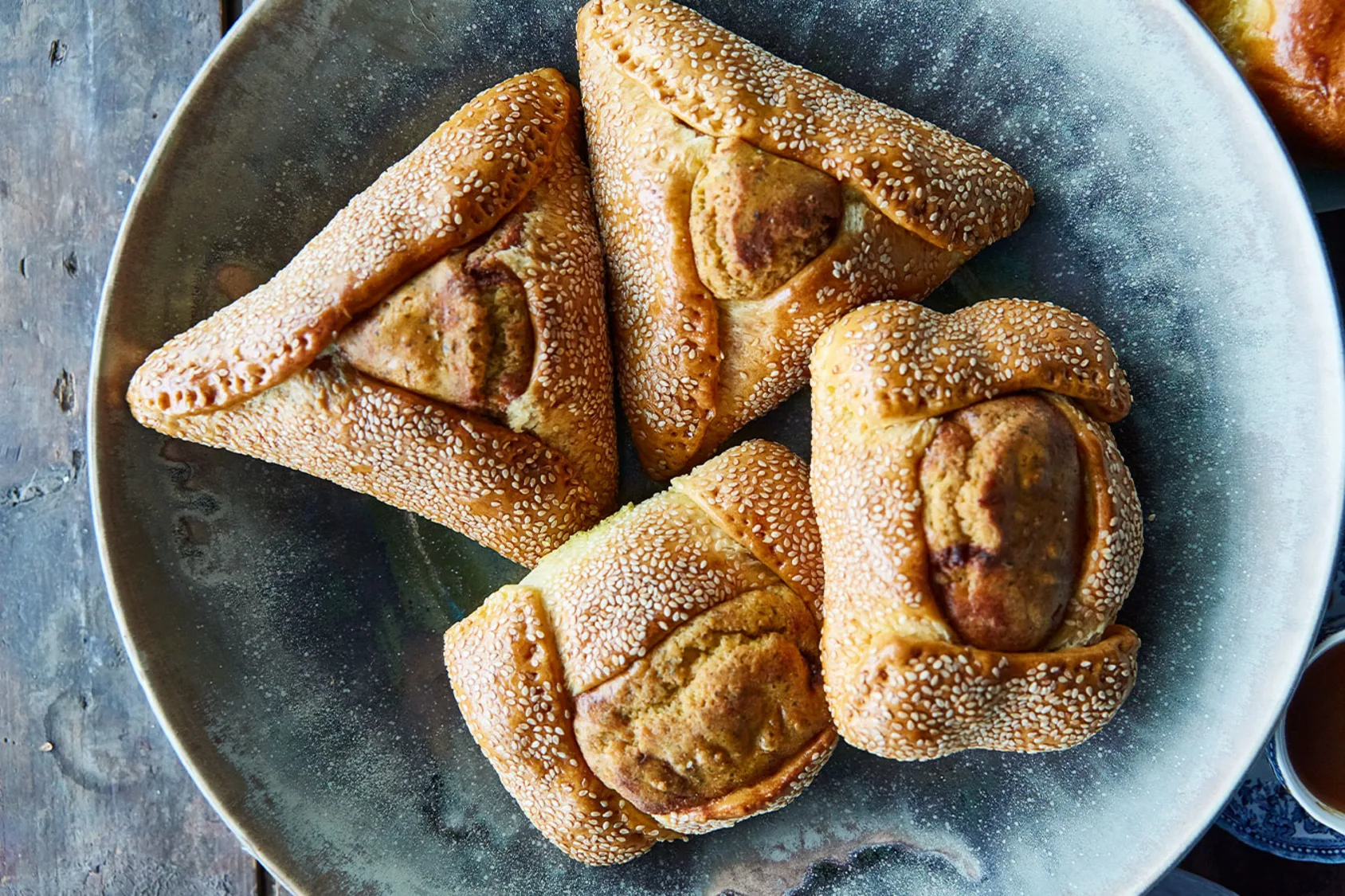
Flaouna
Easter cheese pastry, a traditional Cypriot dish.
Ingredients
- •Flour
- •Yeast
- •Sugar
- •Salt
- •Eggs
- •Halloumi cheese
- •Mint
- •Raisins
- •Sesame seeds
Instructions
Prepare Dough
Mix flour, yeast, sugar, salt, and eggs to form dough. Let rise.
Prepare Filling
Mix grated halloumi cheese, mint, and raisins.
Assemble and Bake
Fill dough with cheese mixture, fold, and sprinkle with sesame seeds. Bake until golden.
Flaouna is a cherished Cypriot Easter pastry that holds deep cultural significance. These cheese-filled pastries are a testament to Cyprus's rich culinary heritage and are traditionally prepared during the Easter season.
The history of flaouna dates back generations, with families passing down their secret recipes from mother to daughter. The pastry's distinctive shape - typically square or triangular with slightly raised edges - is said to symbolize the tomb of Christ, making it particularly meaningful during Easter celebrations.
Making flaouna is a labor of love that requires skill and patience. The dough is made from a mixture of flour, yeast, and eggs, while the filling combines the sharp saltiness of halloumi cheese with the sweetness of raisins and the aromatic touch of dried mint. The exterior is generously coated with sesame seeds, which toast during baking to add a nutty flavor and appealing crunch.
While the traditional recipe remains most popular, some modern variations include adding different types of cheese, such as pecorino or cheddar, to the filling. Some families also incorporate mahlepi (a spice made from cherry pits) or mastic (a resin) to add complexity to the flavor profile.
In Cyprus, flaouna is more than just food - it's a symbol of community and celebration. Families and neighbors often gather before Easter to prepare large batches together, a tradition known as "flaounopiita." These pastries are typically enjoyed on Easter Sunday after the long fast of Lent, often served with a cup of Cypriot coffee or tea.
From a nutritional perspective, flaouna is quite rich and caloric, being high in protein from the cheese and eggs, and carbohydrates from the dough. The sesame seeds add healthy fats and minerals. Due to its dairy content, those who are lactose intolerant should be cautious. Additionally, the presence of gluten in the flour makes this dish unsuitable for those with celiac disease or gluten sensitivity.
